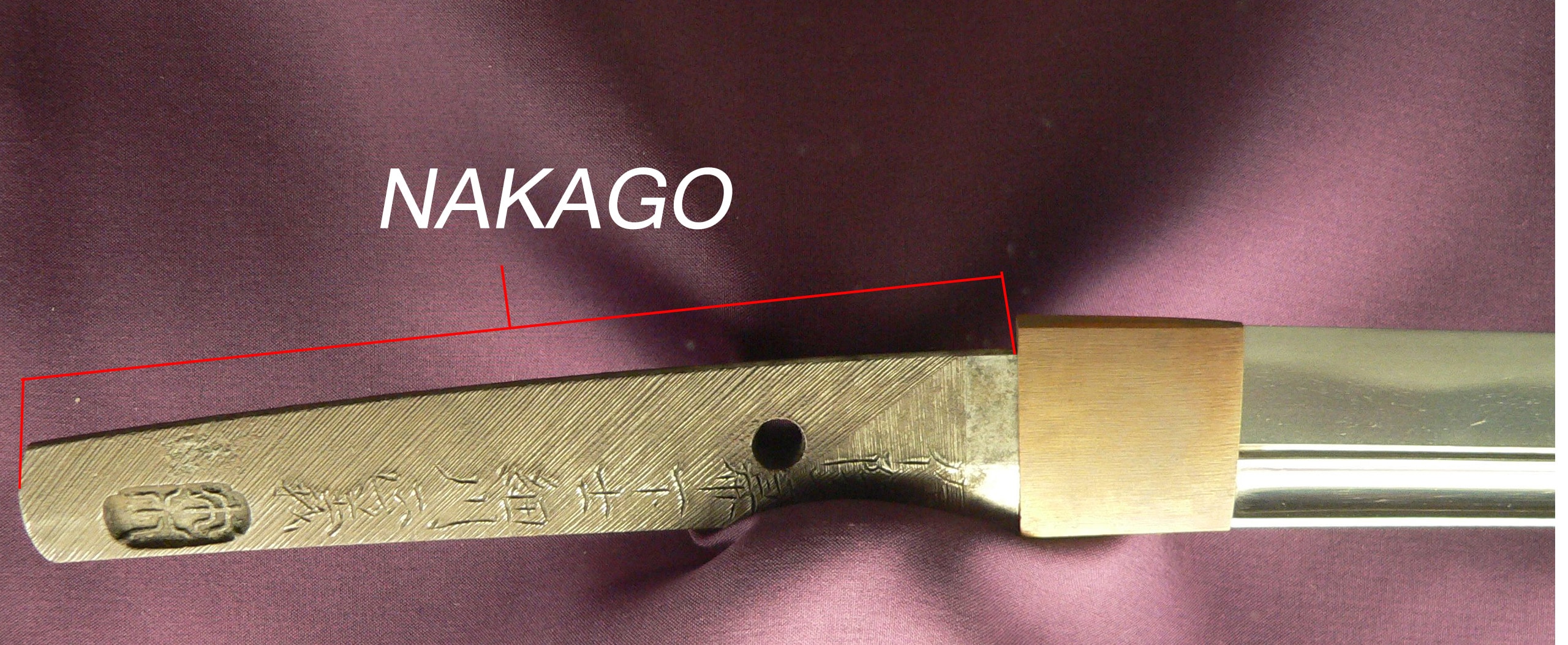The nakago of a katana is the tang, the part of the blade that extends into the hilt. It is an integral part of the sword and plays an important role in determining its strength, balance and durability. Here are some essential aspects of nakago:
The shape :
The shape of the nakago can vary depending on the era and style of the katana, but it is usually rectangular or slightly tapered. The nakago also has a notch (mekugi-ana) near the end that allows it to be attached to the handle with a bamboo dowel (mekugi).
Signature and registration :
The nakago often bears the signature (mei) of the swordsman who made the blade, as well as other inscriptions that provide information about the origin and history of the blade.
File marks :
Nakago is often decorated with file marks (yasurime), which are unique patterns of lines and dots cut into the surface of the silk with a file. The type and direction of the yasurime can also provide clues to the age and origin of the sword.
Nakago-jiri :
Nakago-jiri refers to the shape of the end of the tang, which can be rounded (maru-jiri), pointed (kiri-jiri) or square (katakuchi-ba). Nakago-jiri can also affect the balance and handling of the sword.
Mei-kiri :
In some cases, the signature or inscriptions on the nakago may be partially or completely erased (mei-kiri), either intentionally or accidentally. This can make it difficult to identify the sword or determine its history.
The nakago is an important part of the katana and is often scrutinized by collectors and experts to assess the quality, authenticity and historical significance of the sword.

